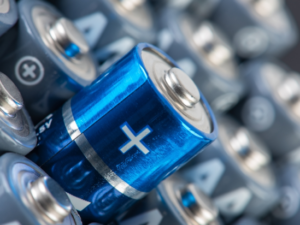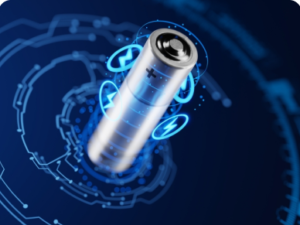7 Key Battery Technology Innovations
In recent decades, the development of battery technology innovations has been considered a crucial solution for enhancing the performance of electronic devices and improving energy efficiency. Advances in battery technology are rapidly transitioning from laboratories to the market, significantly boosting the capabilities and extending the lifespan of these essential energy sources. These innovations include the use of new materials, advancements in charging and discharging processes, and the development of new technologies that can substantially enhance battery performance.
Currently, research and development in the field of batteries have reached a level that can address the ever-increasing demands of modern societies. These cutting-edge technologies enable consumers to benefit from electronic devices with longer battery life, higher capacity, and faster charging times. Additionally, the focus on optimizing manufacturing processes and utilizing advanced materials, such as nanomaterials and lithium-sulfur, has contributed to the production of batteries with improved performance and safety.
Moreover, new technologies such as solid-state batteries, which offer higher energy density and better safety compared to traditional lithium-ion batteries, are expanding. These types of batteries not only have a longer lifespan but also help reduce potential risks associated with conventional batteries. Advancements in fast-charging technologies and flexible batteries further enhance user experience and efficiency in electronic devices.
Ultimately, innovations in battery technology innovations have significantly contributed to reducing environmental impacts and increasing sustainability. New batteries that use recyclable and non-toxic materials help address issues related to battery disposal and production. Overall, these advancements in battery technology innovations are not only improving performance and energy efficiency but also represent a fundamental step toward meeting the growing needs of modern society.
1. Advanced Materials in Battery Manufacturing
New materials in battery manufacturing are among the most crucial factors in enhancing battery performance. These materials can significantly improve capacity, lifespan, and safety, leading to their increasing prominence in research and development.
Lithium-sulfur batteries are a prime example of such innovations. Known for their high capacity and lightweight properties, these batteries present a compelling alternative to traditional lithium-ion batteries. Lithium-sulfur batteries can store more energy in a smaller space, making them especially useful for applications such as portable electronics and electric vehicles. Additionally, they generally have lower production costs and utilize more abundant raw materials compared to their lithium-ion counterparts.
The integration of graphite materials and nanomaterials in battery structures also signifies the advent of a new era in energy technology. Graphite is widely used in many batteries due to its desirable electrical and thermal properties. The incorporation of nanomaterials into battery designs can further enhance characteristics such as energy density, charging speed, and battery lifespan. Nanomaterials improve performance by increasing surface area and reducing internal resistance, leading to more efficient and long-lasting batteries.
Moreover, nanomaterial-based batteries introduce new and improved features, elevating battery capacity and performance to new levels. These batteries are capable of rapidly absorbing and storing energy, significantly reducing charging times. The use of nanomaterials not only optimizes battery efficiency but also contributes to the development of advanced, high-performance energy storage solutions.
Overall, the application of new and advanced materials in battery manufacturing plays a pivotal role in advancing energy technology. These materials offer improved performance metrics and open up new possibilities for future battery innovations, driving progress in various sectors, including consumer electronics, automotive industries, and renewable energy storage.

2. Optimizing Charging and Discharging Processes
Optimizing the charging and discharging processes of batteries is crucial for improving their efficiency and performance. Recent advancements focus on reducing charging times and enhancing energy utilization through sophisticated algorithms and energy management technologies.
Accelerating Charging and Discharging: By using advanced algorithms, charging and discharging times can be significantly reduced. Techniques such as fast-charging algorithms adjust the charging rate based on battery conditions, which helps in shortening charging times while preventing overheating and prolonging battery life.
Artificial Intelligence and Advanced Algorithms: The integration of artificial intelligence (AI) allows for real-time optimization of battery management. AI algorithms can predict usage patterns and adjust charging strategies to enhance energy efficiency and extend battery life. For example, AI can optimize charging cycles to avoid overcharging or deep discharging.
Energy Management Technologies: Modern energy management technologies, like smart charging systems and dynamic power allocation, ensure efficient energy use. Smart charging systems adjust charging based on battery status, while dynamic power allocation optimizes energy distribution across a device.
Battery Monitoring Systems: Advanced monitoring systems track battery health and performance by measuring parameters such as voltage and temperature. This helps in maintaining optimal operation and preventing issues that could affect battery longevity.
In summary, optimizing charging and discharging processes through these technologies leads to faster charging times, improved energy efficiency, and extended battery life, enhancing the overall performance of electronic devices.

3. Increasing Battery Lifespan
Recent advancements in battery technology innovations have led to the development of long-life batteries, which significantly reduce the need for frequent battery replacements. These innovations utilize high-quality materials and advanced manufacturing processes, substantially increasing the useful life of electronic devices.
One key aspect of these battery technology innovations is the use of more durable materials, such as silicon anodes and solid-state electrolytes. Silicon anodes can store more energy, while solid-state electrolytes enhance stability and safety, reducing the risk of leakage and degradation.
Additionally, advanced manufacturing techniques like nanotechnology improve battery performance and longevity. Nanotechnology allows for higher energy densities and faster charging, directly impacting battery lifespan.
These battery technology innovations not only enhance user convenience but also contribute to environmental sustainability by reducing electronic waste. By extending battery life, the need for frequent replacements is minimized, leading to fewer discarded batteries and a lower environmental footprint.
4. Solid-State Batteries
One of the most promising battery technology innovations is the development of solid-state batteries. These batteries offer higher energy density, improved safety, and longer life compared to traditional lithium-ion batteries. Solid-state batteries use solid electrolytes instead of liquid ones, which reduces the risk of leakage and makes them more stable and reliable. This advancement in battery technology innovations is expected to revolutionize various industries, from consumer electronics to electric vehicles, by providing more efficient and durable energy storage solutions.
Solid-state batteries are particularly beneficial for electric vehicles (EVs), where higher energy density translates to longer driving ranges and shorter charging times. The improved safety features also make them less prone to overheating and fires, addressing a significant concern with current lithium-ion batteries. As research and development in solid-state battery technology continue to progress, we can anticipate even greater improvements in energy storage capabilities and overall battery performance.
5. Flexible and Wearable Batteries
Innovations in flexible and wearable batteries are opening up new possibilities for wearable technology. These battery technology innovations are designed to be lightweight, durable, and capable of being integrated into various wearable devices, enhancing the user experience. Flexible batteries can be bent, stretched, and twisted without losing functionality, making them ideal for smartwatches, fitness trackers, and medical devices.
The use of advanced materials like graphene and flexible polymers allows these batteries to maintain high performance while being extremely thin and lightweight. This not only improves the comfort and usability of wearable devices but also extends their battery life, reducing the need for frequent charging. As flexible and wearable battery technology continues to advance, we can expect to see a new generation of wearable electronics that are more comfortable, efficient, and versatile than ever before.
6. Fast-Charging Technologies
Fast-charging technologies are revolutionizing the way we use electronic devices. By reducing the time it takes to charge a battery, these battery technology innovations provide more convenience and efficiency, especially for devices like smartphones and electric vehicles. With fast-charging capabilities, users can significantly cut down on downtime, making it easier to keep their devices powered throughout the day. This is particularly beneficial for electric vehicles, where long charging times have been a major barrier to adoption. Fast-charging stations can replenish an EV’s battery in a fraction of the time compared to traditional charging methods, enhancing the practicality and appeal of electric transportation.
Moreover, fast-charging technologies leverage advanced battery technology innovations such as improved charging algorithms and enhanced thermal management systems. These innovations ensure that batteries can handle higher charging currents without overheating or degrading prematurely. This not only extends the battery’s lifespan but also maintains safety and performance standards. As research and development in fast-charging technologies continue to progress, we can anticipate even quicker and more reliable charging solutions, further integrating these advancements into our daily lives and transforming the landscape of portable and automotive power sources.
7. Environmentally Friendly Batteries
The development of environmentally friendly batteries is becoming increasingly important as we seek to reduce the environmental impact of battery disposal and production. These battery technology innovations focus on using recyclable materials and non-toxic components, which help minimize the ecological footprint of batteries. By incorporating sustainable materials like bio-based polymers and recyclable metals, these batteries are designed to be more eco-friendly throughout their lifecycle, from production to disposal.
Moreover, advancements in battery recycling processes are a key aspect of environmentally friendly battery technology innovations. Efficient recycling methods ensure that valuable materials can be recovered and reused, reducing the need for new raw materials and decreasing environmental degradation. These green batteries not only address the issues of electronic waste and pollution but also promote a more sustainable approach to energy storage. As research in this field continues, we can expect even more innovative solutions that align with global efforts to combat climate change and protect natural resources, making environmentally friendly batteries a critical component of the future of sustainable technology.
Conclusion
Innovation in battery technology has played an important role in the evolution of the energy industry, leading to a world full of electronic devices with long battery life, high capacity, and fast charging. One example of companies leading this innovation is Eurocell, which incorporates cutting-edge battery technology innovations into its products.
Eurocell batteries use advanced materials, fast charging technologies, and environmentally friendly components, making them the best choice for consumers looking to purchase high-quality batteries that seek high performance and durability. These advances increase energy efficiency and are an important step in adapting to the ever-increasing needs of our modern society. By adopting these innovations, companies like Eurocell are setting a new standard in the battery industry and ensuring that electronic devices can meet the demands of the future.










